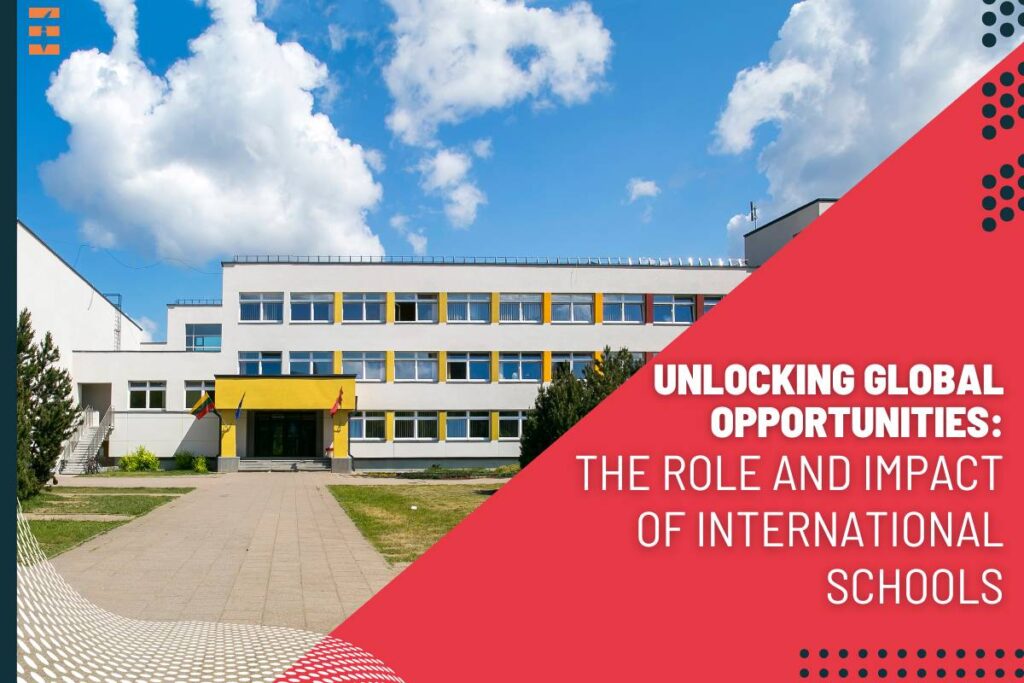In today’s interconnected world, the demand for high-quality education that prepares students for global challenges and opportunities has never been greater. This demand has fueled the growth of international schools worldwide, offering a unique educational experience that transcends borders and cultures. This article delves into the significance, features, challenges, and impact of international schools, exploring their role in shaping global citizens and fostering international understanding.
Understanding International Schools
These schools are educational institutions that cater to a diverse student population, often consisting of expatriates, diplomats, and local families seeking a globally focused curriculum. These schools typically follow international education frameworks such as the International Baccalaureate (IB) program or offer a curriculum based on global best practices.
One of the defining features of international schools is their multicultural environment. Students from different nationalities, backgrounds, and languages come together, fostering a rich tapestry of perspectives and experiences. This diversity is not just limited to students but extends to faculty as well, with educators hailing from various parts of the world, bringing their unique teaching styles and expertise to the classroom.
The Benefits of an International Education
1. Global Perspective

International schools offer a curriculum that emphasizes global issues, cross-cultural understanding, and multilingualism. Students are exposed to diverse viewpoints, which helps broaden their worldview and develop empathy towards different cultures and perspectives.
2. High-Quality Education
Many international schools boast excellent facilities, resources, and teaching standards. They often follow rigorous academic programs such as the IB or Cambridge International Examinations, known for their focus on critical thinking, creativity, and holistic development.
3. Language Acquisition
Being part of a multicultural environment provides ample opportunities for language learning. Students naturally pick up languages through daily interactions and structured language classes, becoming proficient in multiple languages—an invaluable skill in today’s globalized job market.
4. Global Networking
Attending an international school exposes students to a network of peers and alumni worldwide. This network can be instrumental in future academic pursuits, career opportunities, and cultural exchanges, fostering lifelong connections across continents.
Challenges and Considerations
While international schools offer numerous advantages, they also face unique challenges:
1. Cost
Tuition fees at these schools can be significantly higher than local institutions, making them inaccessible to some families. Scholarships and financial aid options are available but may be limited.
2. Transient Nature

Due to the nature of expatriate assignments and diplomatic postings, students at these schools often experience frequent relocations. This transient lifestyle can impact continuity in education and social connections.
3. Cultural Adaptation
Adapting to a new cultural environment and educational system can be challenging for students, especially those transitioning from different schooling systems or linguistic backgrounds.
4. Diversity Management
Managing a diverse student body requires sensitivity, cultural competence, and inclusive policies. International schools must actively promote diversity, equity, and inclusion initiatives to create a harmonious learning environment for all students.
Impact and Future Trends
The impact of international schools extends beyond individual students to influence global education trends and societal dynamics. Here are some notable impacts and future trends:
1. Global Competence
Graduates of international schools are equipped with the skills and mindset to thrive in a globalized world. They demonstrate adaptability, intercultural communication skills, and a deep understanding of global issues—qualities highly valued by universities and employers worldwide.
2. Educational Innovation
International schools often serve as incubators for educational innovation, experimenting with interdisciplinary approaches, technology integration, and experiential learning methods. These innovations influence broader education systems and pedagogical practices.
3. Sustainability and Global Citizenship
Many international schools prioritize sustainability education, instilling environmental consciousness and social responsibility in students. This focus on global citizenship prepares future leaders to tackle pressing global challenges such as climate change, social inequality, and cultural preservation.
4. Digital Transformation

The digital transformation of education is accelerated in international schools, leveraging technology for personalized learning, virtual collaborations, and global classrooms. Hybrid learning models, online platforms, and digital resources are integral to enhancing educational outcomes in diverse settings.
Conclusion
International schools play a pivotal role in shaping global citizens, fostering cultural exchange, and advancing educational excellence on a global scale. While they face challenges such as cost barriers and cultural transitions, their impact on individual students and broader educational trends is undeniable. As we navigate an increasingly interconnected world, investing in international education not only benefits individuals but also contributes to building a more inclusive, knowledgeable, and globally competent society.
Frequently asked questions (FAQs) about international schools along with their answers:
1. What is the difference between an international school and a local school?
Answer: International schools typically offer a globally focused curriculum such as the International Baccalaureate (IB) or Cambridge International Examinations, emphasizing cross-cultural understanding and multilingualism. They also cater to a diverse student body, often including expatriates and local students seeking an international education. In contrast, local schools follow the national curriculum of the country they are located in and primarily serve students from that country.
2. Are international schools only for expatriate children?
Answer: While these schools initially catered to expatriate families, they have evolved to welcome a broader range of students, including local families seeking a global education for their children. This shift has led to increased diversity within international school communities, enriching the overall learning experience.
3. How do international schools promote cultural diversity?
Answer: It promote cultural diversity through a combination of curriculum content, extracurricular activities, and a diverse student and faculty body. They often celebrate cultural festivals, host multicultural events, and incorporate global perspectives into their teaching, fostering an environment of respect, curiosity, and understanding towards different cultures.
4. Are international schools only for English-speaking students?
Answer: No, these schools cater to students from various linguistic backgrounds. While English is often the primary language of instruction in many international schools due to its global importance, these schools also offer language support and instruction in other languages, reflecting the multicultural nature of their student population.
5. How can parents evaluate the quality of an international school?
Answer: Parents can evaluate the quality of an international school by considering factors such as accreditation status (e.g., IB World School status), faculty qualifications and experience, student-to-teacher ratios, facilities and resources, extracurricular offerings, university placement of graduates, and feedback from current students and parents. Visiting the school, attending information sessions, and reviewing school policies and curriculum can also provide valuable insights into the school’s educational standards and values.










